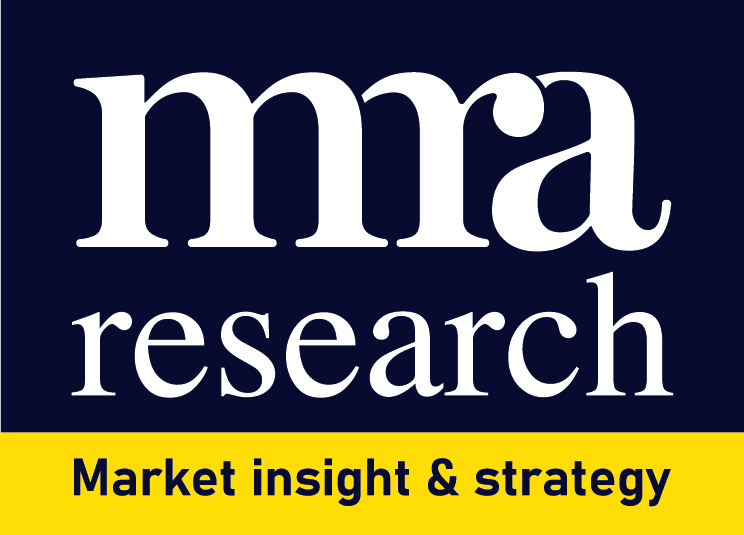Who is swimming naked now?
 In uncertain times it’s tempting to assume all will be well, says Mike Rigby, CEO of MRA Marketing, part of MRA Group. But it’s sensible to research the facts.
In uncertain times it’s tempting to assume all will be well, says Mike Rigby, CEO of MRA Marketing, part of MRA Group. But it’s sensible to research the facts.
You’d have to go back to the second world war to find a more difficult period of supply uncertainty and disruption than now. It’s outside the experience of today’s management. At all levels, in most supply chains, everything is affected, directly or indirectly by first or second order knock-ons. Markets are changing rapidly, more rapidly than at any time I remember. They’re changing because of climate change, energy, sustainability, and flooding, or for fire safety, smart buildings, off site construction, security, and digitalisation, the list goes on. Has there ever been a period of greater change in this industry? Periods of momentous change are characterised by great opportunity, innovations, and great threats as customers move to take advantage or move to safer ground.
The after-effects of two years of Covid lockdowns and restrictions are continuing. Shipping has not returned to normal. Shanghai, which handles 20% of China’s international trade is slowly emerging from near total lockdown. Long term systemic problems and poor labour relations have exacerbated delays at almost every major U.S. port. Russia’s invasion of Ukraine and retaliatory restrictions imposed by Europe and the US have caused additional shortages, delays, and disruption. Price inflation in a wide range of commodities, gas, oil, and key foods is ripping into economies worldwide. The secondary effects of this toxic cocktail will be rippling destructively around the world for the next two to three years at least.
Any management can shine in stable, predictable times, and since the financial crisis of 2008-9, the market has been unexciting, low growth and predictable. But, as the legendary investor Warren Buffett famously observed, it’s “only when the tide goes out do you discover who’s been swimming naked.”
And, so far, so good. Initially supported by Government, the industry acquitted itself well and come through the last two years of pandemic without mass casualties. Many came through so well that they are able to invest in extra capacity, innovations, and acquisitions. As The Pulse report finds (mra-research.co.uk/the-pulse/), merchants are far more confident in their own businesses now than in the prospects for the market. But, suppliers or merchants, what lies beneath? What will be the legacy of this extended period of extremes, particularly in this second more testing period of the next two years?
It’s an easy job to take readings from a few close customers and assume they’re representative of customers as a whole. But are they representative? Using one of MRA’s own research tools – our reality checker – we regularly put that belief to the test. Often, they are quite wrong.
Are your customer relations stronger, weaker, or the same as before? Your service and customer experience might be better and sharper than it was, but is it better and sharper than competitors or worse? It’s easy to misread improvement for relative strength. How can you tell if it’s increasing or decreasing?
If you ask customers to rate your performance, and they give you seven out of 10 is that good or bad? It’s excellent if your competitor’s customers rate them 5 out of 10, but poor if they give them a rating of nine out of 10. But which is it? Marketing is a relative game, and a relatively small competitive edge in customer perceptions can win a lot of business quickly.
Given that good market research can answer that question and establish the facts behind fact-based marketing, companies that back their intuition are making heroic bets – ‘brave’ assumptions as officials like to say to Government Ministers.
Why do companies take these unnecessary risks? Some believe there’s no point in researching customer views when everything’s in turmoil because they are bound to give terrible ratings, and ‘suppliers are all in the same boat.’ Customers will understand and make allowances. It’s a happy assumption.
So here’s a suggestion. It’s always hard to get backing for spending that’s unbudgeted. In May’s Marketing Week, Professor Mark Ritson said, “If you don’t invest 5% of your (marketing) budget in research, you don’t know what you’re doing.”
The Daily Mail had been having fun bashing the BBC for planning to spend £12.5m a year on research to find out what viewers want so they can get ahead of events rather than be caught scrambling on the back foot. The BBC spends £2.5bn a year on content, the product, so in that context £12.5mn is prudent. He explained that every good market-oriented organisation has three sorts of research they should be doing.
First there’s an occasional deep dive when a new team takes over, or markets are changing rapidly; then there’s an annual keep your finger on the pulse tracking research; and then there are occasional inquiries into specific questions that crop up. For a deep dive, research should rise to 10% of budget, with 5% for annual regular updates and tracking. It’s the 5% on research that ensures the remaining 95% of marketing is invested wisely. That’s how you avoid the pitfall of assuming that your marketers and management can intuit what target customers are looking for, just because that’s their job.
In the film Dirty Harry, Clint Eastwood’s Harry Callaghan snarled: “You’ve got to ask yourself one question: ‘Do I Feel Lucky?’ Well, do ya, punk?” We shouldn’t just leave it to chance.
Call Ralph Sutcliffe on 01453 521621 or email ralph@mra-research.co.uk for research that gives you the facts to make your marketing more effective.
